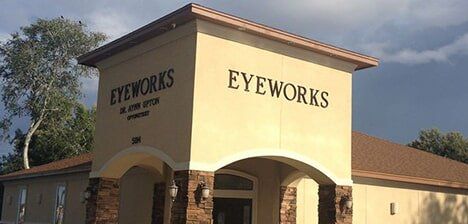Add your medium length title here
This is a paragraph. Writing in paragraphs lets visitors find what they are looking for quickly and easily. Make sure the title suits the content of this text.
Project name here
Client name / Budget
This is the text area for this paragraph. To change it, simply click and start typing. This is the text area for this paragraph. To change it, simply click and start typing.
Key point 1
Key point 2
Project name here
Client name / Budget
This is the text area for this paragraph. To change it, simply click and start typing. This is the text area for this paragraph. To change it, simply click and start typing.
Key point 1
Key point 2
I'll guide you to amazing places
Spend half a day exploring Cashew Ridge Park by foot. This trek is an excellent choice if you don’t have time for a full-day or overnight trip. The early morning tour starts early enough to enjoy the sounds of the forest waking up. The afternoon tour finishes at dusk, so you can enjoy the quiet calm of the nighttime forest. Bring your own food and water.
As your tour guide, I’ll help you disconnect from your everyday world, so you can immerse yourself in nature and reconnect with yourself.
Book your Spot!
This is a subtitle for your new post
What Causes Dry Eyes? A Complete Guide.
Do your eyes ever feel gritty, burning, or watery for no reason? You’re not alone. Dry eye is one of the most common conditions we see here at Eyeworks, and it can impact everything from driving and reading to simply enjoying your day. Understanding why dry eyes happen is the first step to finding relief.
What Exactly Are Dry Eyes?
Your eyes stay comfortable thanks to a delicate balance of tears. Healthy tears aren’t just water—they have three layers (oil, water, and mucus) that keep your eyes hydrated, protected, and clear. When that balance is off—whether your eyes don’t make enough tears or the quality isn’t right—you may notice symptoms like:
- Burning, stinging, or scratchy eyes
- Redness
- Blurry or fluctuating vision
- Excess watering (yes, watery eyes can be a sign of dryness!)
Common Causes of Dry Eyes
1. Natural Aging
Tear production decreases as we get older, which is why people over 50 are more likely to experience dry eyes.
2. Hormonal Shifts
Women often notice dry eye symptoms during pregnancy, menopause, or when using birth control, due to changes in estrogen and progesterone.
3. Environment & Lifestyle
Wind, air conditioning, heaters, and smoke can dry out tears. Long hours on the computer or phone reduce blinking, which speeds up tear evaporation.
4. Contact Lenses
Lenses can disrupt the tear film, especially if they don’t fit well or are worn too long.
5. Medications
Certain medications list dry eye as a side effect, such as:
- Allergy medicines (antihistamines, decongestants)
- Antidepressants
- Blood pressure medications
- Acne treatments like isotretinoin
6. Medical Conditions
Dry eye can be linked to conditions such as:
- Rheumatoid arthritis, lupus, or Sjögren’s syndrome
- Diabetes
- Thyroid disorders
- Blepharitis (eyelid inflammation)
7. Eye Surgery
Procedures like LASIK or cataract surgery can affect tear production and cause temporary or long-term dryness.
8. Nutrition Deficiencies
Vitamin A is vital for eye health, and though deficiencies are rare in the U.S., they can contribute to chronic dryness.
Why Dry Eyes Shouldn’t Be Ignored
Dry eyes aren’t just uncomfortable—they can increase your risk of infection, corneal damage, and vision changes if left untreated. Even if your symptoms seem mild, it’s best to address them early before they interfere with your daily life.
How Eyeworks Can Help
At Eyeworks, we take dry eye seriously and offer advanced testing to identify the cause of your dryness, not just the symptoms. Depending on your needs, treatment may include:
- Prescription eye drops or artificial tears
- Warm compresses and eyelid care
- Omega-3 nutritional support
- Specialized in-office treatments like OptiLight IPL therapy or punctal plugs
Our goal is simple: to help you see and feel your best every day.
Final Thoughts
Dry eyes can happen for many reasons—age, lifestyle, medical conditions, or even the environment around you. The good news is that relief is possible once we know the cause.
👉 If you’re dealing with dry eye symptoms, don’t wait. Schedule a dry eye evaluation with us today at Eyeworks and take the first step toward lasting comfort.
📍 Eyeworks – Corpus Christi, TX
📞 Call us: 361-993–5882
🌐 Visit: www.eyeworkscc.com

In today’s digital world, screens are everywhere—classrooms, homes, and even playtime. While technology offers incredible learning opportunities, it also comes with hidden risks for children’s vision. One of the most concerning is the rising prevalence of myopia (nearsightedness), and research increasingly points to increased screen time as a contributing factor. What Is Myopia? Myopia occurs when the eye grows too long from front to back, causing light to focus in front of the retina instead of directly on it. This makes distant objects appear blurry while close-up vision remains clear. Myopia typically develops in childhood and progresses into the teenage years. If left unchecked, it can increase the risk of serious eye conditions later in life, such as retinal detachment, glaucoma, and macular degeneration. How Screen Time Contributes to Myopia Extended screen use affects children’s eyes in several ways: Prolonged near work: Staring at tablets, phones, or computers for long stretches puts extra strain on the eye’s focusing system. Reduced blinking: Kids tend to blink less when using screens, leading to eye strain and dryness, which can worsen visual fatigue. Less outdoor time: Time spent indoors on screens often replaces outdoor play. Exposure to natural daylight has been shown to slow myopia progression, so this lack of outdoor time plays a major role. Alarming Trends in Childhood Myopia Studies show that rates of myopia have doubled in the past 50 years, and experts warn that by 2050, nearly half of the global population may be nearsighted. In children, the shift is happening earlier and progressing more quickly, which raises concerns for long-term eye health. Tips for Parents to Protect Children’s Eyes While screens are here to stay, there are steps parents can take to reduce the risk: Follow the 20-20-20 rule: Every 20 minutes, encourage your child to look at something 20 feet away for at least 20 seconds. Prioritize outdoor play: Aim for at least 1–2 hours of outdoor activity per day. Natural light helps regulate eye growth. Limit recreational screen time: Especially before bedtime, when blue light exposure can also disrupt sleep. Schedule regular eye exams: Early detection is key. An optometrist can monitor your child’s vision and recommend treatment options if needed. Myopia Management Options If your child is already showing signs of myopia, there are treatment strategies that can slow its progression. These include specially designed glasses, contact lenses, and even therapeutic eye drops. Early intervention makes a big difference in protecting long-term vision. ✅ At Eyeworks, we specialize in children’s vision and myopia management. If you’ve noticed your child squinting, sitting too close to the TV, or struggling with distance vision, it may be time for an eye exam. 👉 Call us today at 361-993-5882 or visit www.eyeworkscc.com to schedule your child’s appointment.

Myopia, more commonly known as nearsightedness, is a vision condition where objects up close appear clear, but those far away look blurry. This occurs because the eye grows too long from front to back, or the cornea becomes too curved. As a result, light entering the eye focuses in front of the retina instead of directly on it, causing distance vision to blur. Why Does Myopia Matter? At first glance, myopia might seem like a simple inconvenience, easily corrected with glasses or contact lenses. However, it’s much more than just needing stronger prescriptions. Myopia is a progressive condition, and higher levels significantly increase the risk of serious eye diseases later in life, including retinal detachments, glaucoma, early cataracts, and myopic macular degeneration — conditions that can lead to permanent vision loss. Why Is Myopia on the Rise? Over the past few decades, myopia has become alarmingly more common. In fact, it’s estimated that by 2050, nearly half of the world’s population will be myopic. Several key factors are contributing to this rapid rise: Increased Near Work: Children today spend significantly more time on near-focused activities like reading, studying, and, more recently, using digital devices. Prolonged screen time and limited breaks reduce opportunities for the eyes to relax and focus at a distance. Less Time Outdoors: Numerous studies show that spending time outdoors plays a protective role against myopia development. Natural light exposure and viewing objects at varying distances seem to slow the progression of nearsightedness. Unfortunately, children now spend less time outside than previous generations. Genetic Influence: While lifestyle factors play a huge role, genetics cannot be overlooked. If one or both parents are myopic, the risk of a child developing myopia increases. However, environment and habits often determine how quickly and severely it progresses. The Impact on Children The concern with childhood myopia isn’t just blurry vision today; it’s the cumulative effect of progression over time. A child diagnosed at age 7 could see their prescription worsen every year without intervention, leading to high myopia by their teenage years. Higher levels of myopia correlate with greater long-term eye health risks. How We Can Help Fortunately, myopia management is a growing area of eye care, offering treatments that can slow or even halt progression. Options include: Specialty Contact Lenses (such as Ortho-K or MiSight) Prescription Eye Drops (like low-dose atropine) Lifestyle Modifications, encouraging more outdoor activity and screen breaks At Eyeworks, we are dedicated to protecting your child’s future vision through comprehensive myopia screenings and tailored management plans. Concerned About Your Child’s Vision? Schedule a myopia consultation today to learn how we can help safeguard their sight for years to come. 361-993-5882 www.eyeworkscc.com









